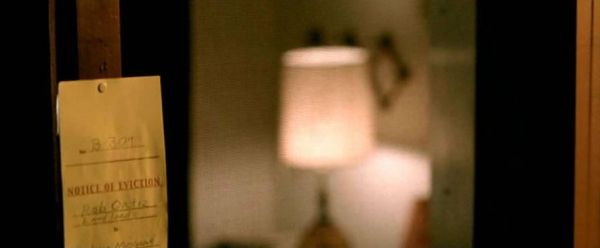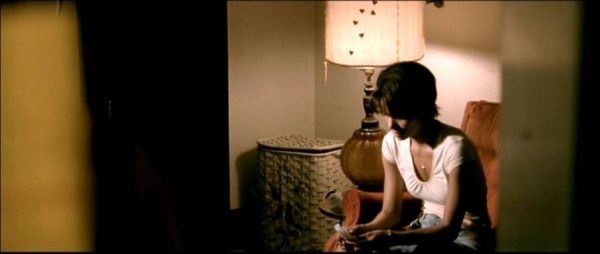Difference between revisions of "TCF340/BordwellThompson/Cinematography (Discussion)"
From Screenpedia
Jump to navigationJump to searchScreenAdmin (talk | contribs) m (11 revisions imported) |
|||
| (8 intermediate revisions by one other user not shown) | |||
| Line 1: | Line 1: | ||
| − | #'''Group | + | #'''Group 2:''' What is depth of field? |
#*Define these terms and provides examples of when these techniques might be used: | #*Define these terms and provides examples of when these techniques might be used: | ||
#**Shallow focus | #**Shallow focus | ||
#**Deep focus | #**Deep focus | ||
#**Pulling focus (What's another name for it?) | #**Pulling focus (What's another name for it?) | ||
| − | #'''Group | + | #'''Group 3:''' What is aspect ratio? |
#*Define these terms | #*Define these terms | ||
| − | #**Academy Ratio: 1.33 : 1 | + | #**Academy Ratio: 1.33 : 1 or 4 : 3 |
#**Widescreen | #**Widescreen | ||
#***Anamorphic 2.35 or 2.4 : 1 | #***Anamorphic 2.35 or 2.4 : 1 | ||
#***Masked 1.85 : 1 | #***Masked 1.85 : 1 | ||
| + | #***TV widescreen: 16 : 9 or 1.78 : 1 | ||
#*What are the aspect ratios of ''Day for Night'', ''Shakespeare in Love'' and ''Monster's Ball''? | #*What are the aspect ratios of ''Day for Night'', ''Shakespeare in Love'' and ''Monster's Ball''? | ||
| − | #'''Group | + | #'''Group 1:''' What is focal length? |
| − | |||
| − | |||
| − | |||
#*Define these focal-length terms and provides examples of when these techniques might be used: | #*Define these focal-length terms and provides examples of when these techniques might be used: | ||
#**Wide angle | #**Wide angle | ||
#**Telephoto | #**Telephoto | ||
#**''Variable'' focal length lens (what's another, more common name for it?) | #**''Variable'' focal length lens (what's another, more common name for it?) | ||
| + | #'''Any Group?'''How does the aspect ratio of films shown in theaters differ from films presented on video? (Chapter 1) Explain these two processes for converting films to video: | ||
| + | #*Letterboxing | ||
| + | #*Pan-and-scan | ||
==Cinematography and narrative== | ==Cinematography and narrative== | ||
| Line 29: | Line 30: | ||
== Bibliography == | == Bibliography == | ||
| − | #David Bordwell and Kristin Thompson, ''Film Art: An Introduction'' | + | #David Bordwell and Kristin Thompson, ''Film Art: An Introduction'' (New York: McGraw-Hill). |
==External links== | ==External links== | ||
#[http://www.tcf.ua.edu/Classes/Jbutler/T440/VisualStyleIllustrations02.htm Cinematography illustrations] | #[http://www.tcf.ua.edu/Classes/Jbutler/T440/VisualStyleIllustrations02.htm Cinematography illustrations] | ||
| − | #[http://www.tcf.ua.edu/ | + | #[http://www.tcf.ua.edu/Classes/Jbutler/T440/MonstersBall/index.htm ''Monster's Ball'' frame grabs] |
[[Category:TCF340 Discussion]] | [[Category:TCF340 Discussion]] | ||
Latest revision as of 17:31, 14 August 2019
- Group 2: What is depth of field?
- Define these terms and provides examples of when these techniques might be used:
- Shallow focus
- Deep focus
- Pulling focus (What's another name for it?)
- Define these terms and provides examples of when these techniques might be used:
- Group 3: What is aspect ratio?
- Define these terms
- Academy Ratio: 1.33 : 1 or 4 : 3
- Widescreen
- Anamorphic 2.35 or 2.4 : 1
- Masked 1.85 : 1
- TV widescreen: 16 : 9 or 1.78 : 1
- What are the aspect ratios of Day for Night, Shakespeare in Love and Monster's Ball?
- Define these terms
- Group 1: What is focal length?
- Define these focal-length terms and provides examples of when these techniques might be used:
- Wide angle
- Telephoto
- Variable focal length lens (what's another, more common name for it?)
- Define these focal-length terms and provides examples of when these techniques might be used:
- Any Group?How does the aspect ratio of films shown in theaters differ from films presented on video? (Chapter 1) Explain these two processes for converting films to video:
- Letterboxing
- Pan-and-scan
Cinematography and narrative
In the Monster's Ball scene we viewed, what narrative functions does the cinematography serve? Be sure to consider deep/shallow focus, focus shifts and framing in the third shot.
Bibliography
- David Bordwell and Kristin Thompson, Film Art: An Introduction (New York: McGraw-Hill).

